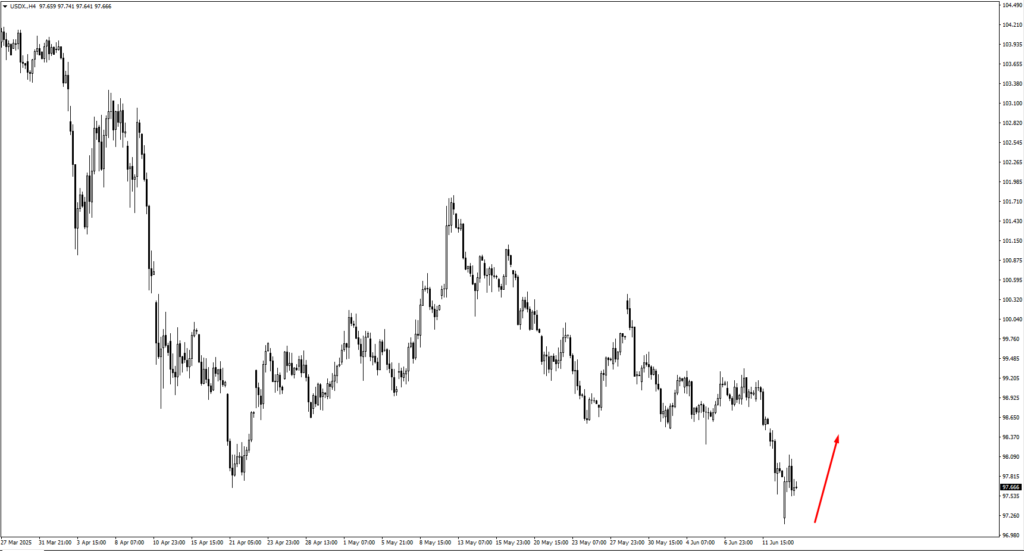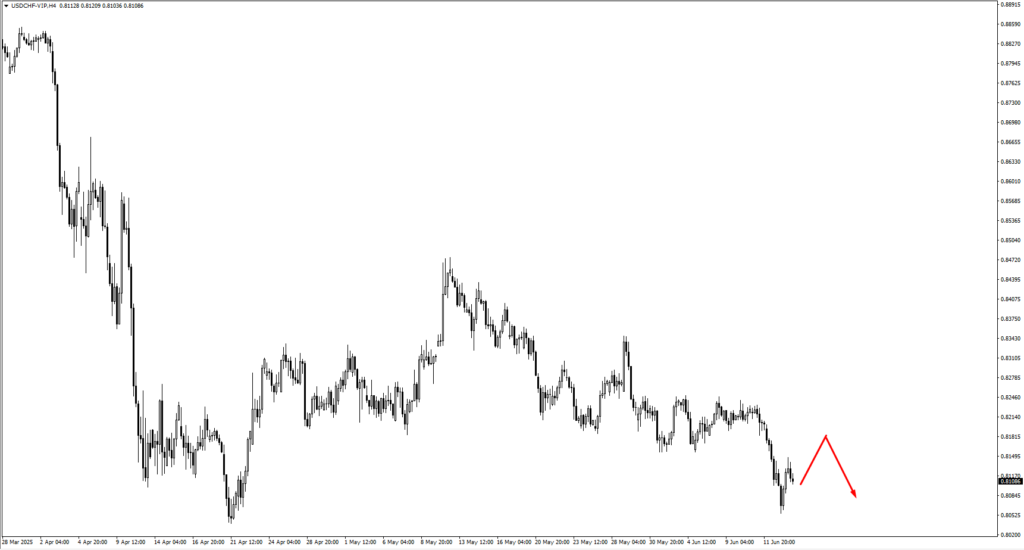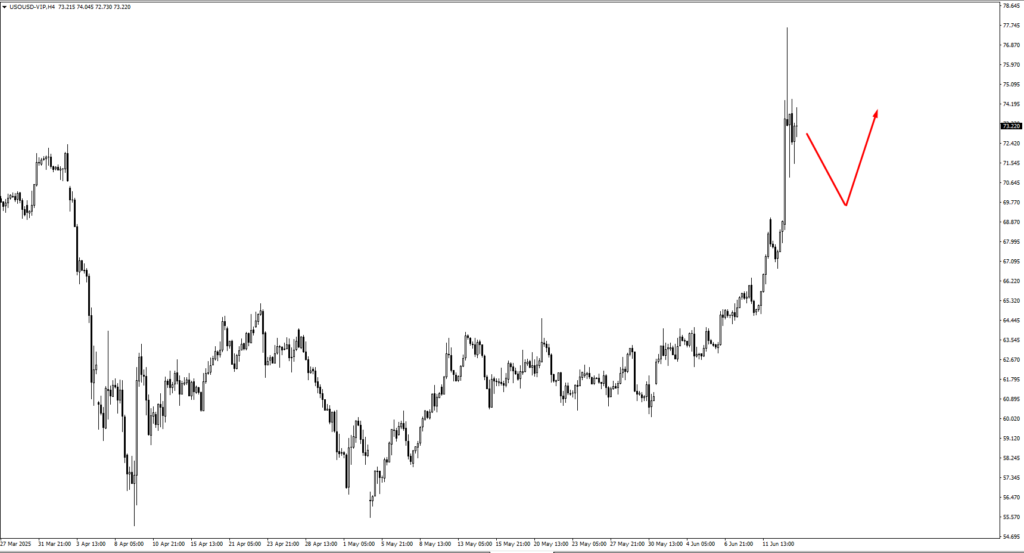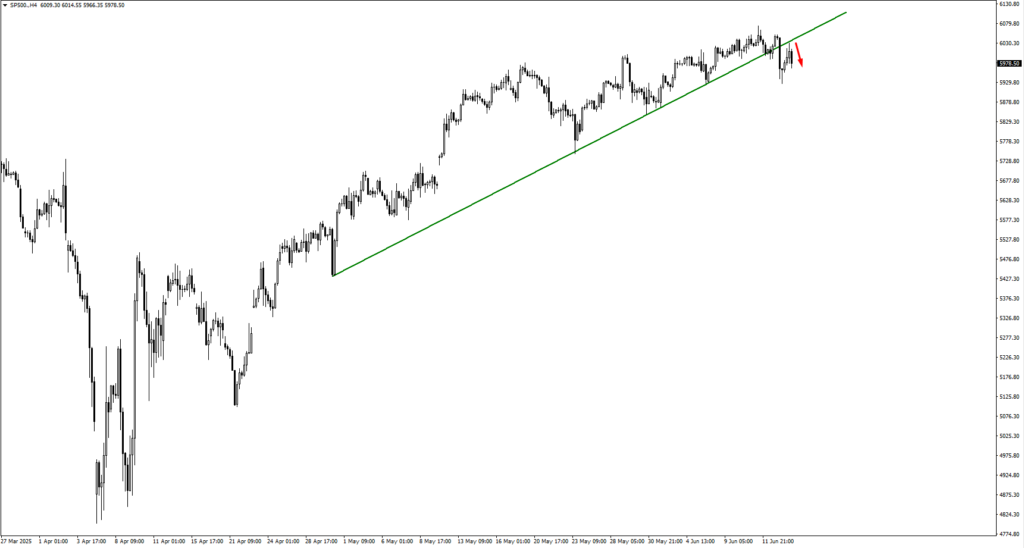
You’d think a booming stock market means strong economic health. But in 2025, that’s not the case. The market’s biggest engine right now isn’t productivity or profits, it’s policy. And that should give market participants pause.
Markets seem to be having quite the high; bitcoin is through the roof and gold is putting a new shine on that safe haven crown. With how global events are going, it feels too good to be true…and it might be. A surge like this doesn’t seem to be driven by earnings or market optimism.
Liquidity Is the Real Catalyst
Since 2020, the U.S. money supply has exploded. M2, which includes cash, checking and savings deposits, and money-market funds, is now at an all-time high. This didn’t happen naturally.
The Federal Reserve pushed trillions of dollars into the system through aggressive quantitative easing and historically low interest rates. The idea was to keep the economy stable during the COVID crisis, and the side effect was a flood of cheap money.
When cash is abundant and interest rates are low, money doesn’t stay idle. It moves. Traders, hungry for returns, look beyond savings accounts and government bonds. They turn to equities, real estate, gold, and now digital assets like Bitcoin. With more buyers chasing the same pool of assets, prices naturally go up.
A Pattern We’ve Seen Before
This kind of rally isn’t new. After the 2008 financial crisis, a similar playbook launched one of the longest bull markets in history. What we’re seeing now is even more intense. The scale and speed of the 2020 monetary expansion dwarfed anything that came before it. It boosted not just blue-chip stocks, but also speculative investments and safe-haven assets alike.
Importantly, much of this new money doesn’t flow into everyday consumer spending. It goes straight into financial markets. That’s how we see asset prices breaking records even when the economy shows cracks elsewhere. Earnings growth is soft. The job market is sending mixed signals. Yet, prices keep climbing because liquidity keeps flowing.
The Fed’s approach isn’t limited to just printing money. It uses other tools like the Supplementary Leverage Ratio to let banks lend more and hold more government debt. These tools help stabilise markets during turmoil, but they also tell us how far central banks are willing to stretch to keep things moving.
The Risk of Overreliance
That willingness comes with risk. If something breaks—commercial real estate, for example, or a regional banking sector already under stress—the likely response will be even more liquidity.
History suggests that when cracks appear, the go-to solution is to print more. That works in the short term, but it raises serious long-term concerns.
We’ve seen the consequences of this before. In the 1970s, years of loose policy and rising deficits led to runaway inflation. Gold jumped from $35 an ounce to $850 by 1980. To bring inflation under control, the Fed had to push interest rates above 15 percent, which caused a painful recession. That period stands as a warning about the limits of stimulus.
Where Should Traders Look?
For those still holding stocks, it makes sense to be selective. Sectors with pricing power tend to perform better when inflation threatens returns.
Energy, industrials, and defence may offer more resilience than tech or growth-heavy names. Defensive sectors like healthcare and consumer staples are also worth considering as volatility picks up.
Cash, especially in U.S. dollars, no longer feels like a safe bet. Despite being the world’s reserve currency, the dollar faces long-term erosion. High fiscal deficits, softening demand for U.S. debt, and rising global diversification away from dollar-denominated reserves all weigh on its value.
What About Safer Havens?
Holding too much cash during a time of aggressive money printing may result in slow, silent losses. Traders focused on long-term preservation should consider alternatives.
Precious metals like gold and silver continue to hold value during currency debasement. Treasury Inflation-Protected Securities (TIPS) are structured to track inflation directly. Commodities, particularly in agriculture and energy, often rise when the dollar weakens. Foreign currencies such as the Swiss franc, Singapore dollar, or Norwegian krone are attractive options for diversification.
And for those comfortable with volatility, digital assets remain a growing part of the hedge playbook. Bitcoin continues to see inflows from institutions and long-term holders alike, despite its unpredictable price swings.
At the heart of it all is liquidity. It’s what’s lifting asset prices while economic signals remain cloudy. But this is not a rally built on strength. It’s a rally floating on easy money. And when the current changes, the fall can be sharp.
Traders riding this wave should keep their eyes on the tide. The conditions that helped markets climb can shift fast, and when they do, having a plan matters more than ever.
Market Movements This Week
We’ve seen markets drift into critical zones this week, and now the question is whether they’ll hold the line or break from familiar patterns. A closer look at the charts helps us anticipate where momentum may build.

USDX has risen from 97.139 and is now testing resistance at the 97.90 zone. This area has capped rallies before, and we’re watching closely to see if the dollar can break through. If it does, 98.30 is the next level to watch for a reaction. However, if price starts to slip here, support at 96.40 becomes the key area for bullish confirmation. Until the Fed delivers more clarity later this week, we expect price action to remain reactive rather than directional.
EURUSD found resistance at 1.1485 and has begun pulling back. Momentum has softened, and unless bulls reclaim that high quickly, we expect a drift toward 1.1420, which may offer support. Should price turn higher again instead, we’ll be watching 1.1675 and 1.1730 as potential zones where sellers may step in. This week’s eurozone CPI reading will likely shape whether the pair finds a floor—or loses it.
GBPUSD continues to show strength after taking out the 1.35221 low, but so far has not triggered any major selling pressure. The lack of bearish momentum suggests further upside is possible, with the next key resistance at 1.3670. Whether the pair pushes higher or stalls will likely depend on Wednesday’s CPI report. Any surprise uptick in inflation could change the tone quickly, so we’re staying flexible.
USDJPY dropped from the 145.75 area but found support again near 142.785, a level that has held in previous weeks. The bounce from there suggests bulls may have regained some control. As price moves higher, we’re now watching 145.15, 145.75, and 146.55 for possible bearish reactions. If the BOJ hints at any shift in policy tone when it holds rates at 0.5%, we could see stronger moves either way.

USDCHF remains under pressure and may be setting up for a new leg lower. If price consolidates beneath 0.8195, that area becomes a potential short zone. Should the 0.80388 low be taken out, we’ll be looking for bullish confirmation next, particularly if the SNB does surprise markets by cutting rates from 0.25% to 0.00% as forecasted. Either way, a shift in Swiss franc volatility may follow.
AUDUSD is still caught in consolidation, but the pressure is building. If price pushes up to 0.6575, it could attract sellers looking for a downside continuation, especially with employment data sharply downgraded from 89.0K to 19.9K. We’re also watching how price behaves near the green trend line marked on our chart—this is where we expect any real directional move to show its hand.
NZDUSD continues to respect its support along the green trend line. However, price remains soft, and a liquidity sweep below that line isn’t off the table. If that happens, we’ll be looking closely at the reaction—either to confirm a deeper move or to catch a reversal setup. With limited data out of New Zealand this week, the pair may simply track AUD sentiment.
USDCAD retested the 1.3590 low and even pushed briefly below it, hinting at bearish intent. If this move holds, the next support at 1.3500 becomes the key zone for price action. Stronger oil prices could lend the Canadian dollar a tailwind here, particularly if geopolitical risk continues to support crude. Still, we’re waiting on a clear confirmation before calling for further downside.

USOil remains supported, with prices holding firm as geopolitical tensions between Israel and Iran remain unresolved. Traders are reluctant to sell into this kind of uncertainty, and if consolidation holds above 68.40, we could see another push higher. However, without fresh headlines, the rally may struggle to gain traction. A pullback to that 68.40 area could attract buyers again.

Gold has broken above the 3439 level, but needs more confirmation before this can be considered a solid breakout. If price stalls, we’ll look to the 3385 and 3355 areas for potential buying interest. For now, gold appears to be drifting while traders wait on U.S. inflation data and the Fed’s stance. Until then, we expect more sideways action with a bullish lean.

SP500 has pulled back slightly but remains well above the monitored 6000 area. So far, sellers have not shown strong conviction. If price consolidates here, it may just be a pause before another move higher. However, any weakness in earnings forecasts or a hawkish tone from the Fed could trigger a sharper correction. We’re watching for clearer signs of either.
Bitcoin is consolidating after its massive run, with potential bearish setups forming around the 106,950 area. If sellers reclaim control, a drop through the 102,666 low could lead to a deeper flush. On the other hand, continued consolidation may simply be the market catching its breath. Either way, volatility is likely to return soon, so we’re keeping tight watch on the edges of this range.
Natural Gas bounced off the 3.25 area and is now heading toward the 3.52 zone. Bulls will want to see continued follow-through to confirm the move. This week could bring more upside, but traders will likely wait to see if price can hold above the current levels before committing to new longs.
Key Events This Week
On Tuesday, the spotlight turns to Japan, where the Bank of Japan is set to announce its latest policy rate decision. Markets expect it to remain at 0.5 percent, unchanged from previous meetings. However, the real focus will be on any change in language. If Governor Ueda signals the possibility of a rate hike or hints at scaling back stimulus, the yen could strengthen sharply. This would pressure USDJPY, which is already bouncing within a sensitive range. Japanese policymakers have so far resisted tightening, but inflationary pressures and currency weakness may force their hand. Traders should brace for a reactive move, even if the headline rate holds steady.
Come Wednesday, the UK takes centre stage with its Consumer Price Index (CPI) report. Forecasts suggest a year-on-year reading of 3.3 percent, slightly lower than the previous 3.5 percent. While this indicates a modest cooling in inflation, the difference is slim. The reaction in GBPUSD will likely depend on whether price has already made a new swing high before the release. If so, the data could trigger a retracement, especially if inflation undershoots expectations. However, a surprise spike in the numbers could revive rate hike speculation and give sterling a fresh boost. Either way, this CPI print has the potential to jolt the market out of its holding pattern.
Thursday brings a flurry of decisions from four major economies. First up is the U.S. Federal Reserve, expected to keep its Federal Funds Rate at 4.5 percent. After weeks of mixed data and growing calls for rate cuts later this year, traders will dissect the statement for any dovish or hawkish shifts. The Fed’s tone here matters more than the number. If policymakers express concern about sticky inflation or a tight labour market, the dollar could catch a bid. But if the tone leans toward patience or future easing, risk assets could rally further.
At the same time, Australia’s Employment Change data drops, with a sharp drop in hiring projected: 19.9K jobs expected versus 89.0K previously. That’s a steep slowdown, and if the report confirms weakness, AUD could come under pressure—especially if paired with dovish signals from the Reserve Bank of Australia. Price action in AUDUSD has already been drifting, and this data could be the spark for a more decisive move.
Switzerland also enters the fold Thursday with the Swiss National Bank’s rate decision, where markets anticipate a cut from 0.25 percent to 0.00 percent. If that happens, the franc could weaken, particularly against the dollar and euro. But as with most central bank meetings this year, the reaction may depend more on the outlook than the rate itself. Traders will look for clues about how long the SNB expects to remain accommodative, especially amid global divergence in monetary policy.
Rounding out Thursday’s lineup is the Bank of England, expected to leave its Official Bank Rate at 4.25 percent. The decision itself is unlikely to surprise, but the statement could still move markets. If policymakers emphasise persistent inflation risks, GBP could hold its gains or even strengthen. But if they acknowledge progress in disinflation or hint at a more neutral stance, sterling may lose steam.
This week won’t deliver blockbuster surprises on paper, but the tone from central banks and the nuance in CPI figures could still swing markets. We’re preparing for pockets of volatility, especially around FX pairs and commodities tied to rate-sensitive currencies. As always, the message between the lines may matter more than the headline print.









